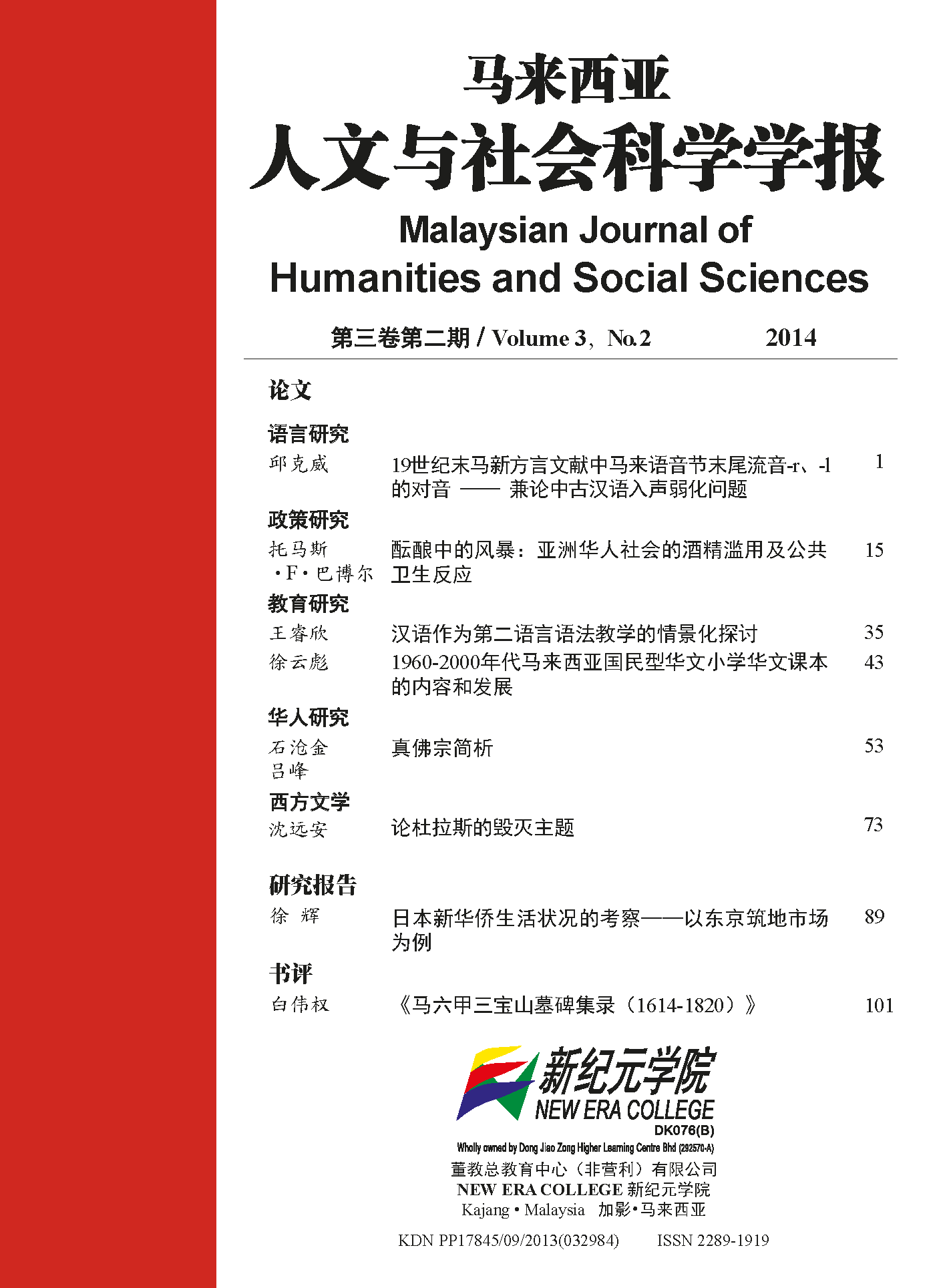真佛宗简析 A Brief Analysis of the True Buddha School
Keywords:
真佛宗、卢胜彦、世界真佛宗宗务委员会、华人, True Buddha School, Lu Sheng Yan, the Affairs Committee of World True Buddha School, ChineseAbstract
1983年,卢胜彦在美国西雅图正式创立真佛宗。世界真佛宗宗务委员会的成立后,真佛宗产生了健全的组织系统,进而能够更深入地弘扬真佛密法。真佛宗的组织在全球有广泛分布,尤其是华人人口众多的国家。1990年代开始,真佛宗在大马蓬勃发展。马来西亚成为真佛宗传播发展的重要中心之一。真佛宗将华人传统的佛道思想与藏传佛教的密宗思想结合起来,颇有创新性,因而吸引很多人参加。真佛宗密教的宗教思想和修持方式具很鲜明的特色,作为新兴的民间教派,它并不为很多教派尤其是佛教教派所接受,乃至不被看做正信的宗教,以至被视为“附佛外道”、“邪教”。
In 1983, Lu Shengyan formally established True Buddha School in Seattle, U.S. After the establishment of the Affairs Committee of World True Buddha School, a proper organization was created to further the promotion of True Buddha. The True Buddha School is widely distributed in the world, especially in the countries where there are large numbers of Chinese. True Buddha School flourished in Malaysia from the beginning of the 1990's. Malaysia has become one of the most important centres of the development of True Buddha School. The traditional thoughts of Buddhism and Taoism are integrated with Tantric ideas in Tibet by True Buddha School. Its innovative ideas have attracted many adherents. The religious thoughts and practice modes of True Buddha School are very distinctive. As a rising folk cult, it is not accepted by many religions, especially Buddhism, and it is considered not a true religion but "the cult of heretics".




